20 Underseen Horror Movies Featured in ‘House of Psychotic Women’
“There was something terrible in that film, a desperation I recognized in myself, in my inability to communicate effectively, and the frustration that would lead to despair, anger and hysteria.” – House of Psychotic Women, Kier-La Janisse on ‘Possession’ (1981).

In 2012, writer and film programmer Kier-La Janisse published House of Psychotic Women, one of the best books of genre study in existence. Janisse changed the landscape of horror movie books by centering her film analysis around her personal experiences. She confirmed what fans of the genre have always known to be true—horror is deeply personal. “Everything we see onscreen is a fiction that we are asked to believe, and we believe in it because we can find truth in that fiction.” Subtitled An Autobiographical Topography of Female Neurosis, Janisse’s book exhaustively examines woman-centered horror and exploitation films. These pages provide an in-depth look at female characters who have some degree of mental instability—“unhinged women horror,” if you will.

The book is split into two parts. In the memoir section, Janisse reflects on crucial moments in her life, tying in the parallels with the experiences of women in film. She strips bare, treading into extremely raw and uncomfortable territory: trauma, a difficult childhood, her years as a juvenile delinquent, the complicated relationship with her mother, the cyclical abuse that haunted them both, and so much more from her turbulent life. Following the memoir portion, there’s a beautiful image gallery filled with poster art, stills, and promotional imagery from films mentioned in the book. The second section is an excellent appendix of an astonishing number of movies—from obscurities like Morgiana (1972) and The Mafu Cage (1978), to cult classics like Carrie (1976), to Oscar winners like Black Swan (2010).
Ten years after its release, Janisse published an expanded hardcover edition in a larger format, with tons of more films and images. Some recent titles include Raw (2016), Saint Maud (2019), and Resurrection (2022). The book is a must-read for any devout horror aficionado whose life has been shaped by horror. It is especially for women whose fascination with female neurosis in horror has helped them cope with their own struggles—the same women who can say that horror has become a part of them. To quote Janisse, “I stayed there because of something in myself. And that ‘something’ was decidedly female.”
Curated below are 20 must-watch films featured in House of Psychotic Women to hold you over until you get a copy of your own:
Cat People (1942)

Irena Dubrovna (Simone Simon), a strange and lonely Serbian fashion designer living in NYC, believes she is descended from a cursed tribe in which any woman who becomes aroused will shape-shift into a lethal panther. When she meets the handsome engineer Oliver Reed (Kent Smith), the two connect and she confesses that he’s the first friend she’s ever had. The two end up impulsively getting married after only a short time of knowing each other. Unable to consummate their marriage, he pushes her to see a psychiatrist and begins growing closer to his beautiful co-worker Alice Moore (Jane Randolph). Janisse describes the movie as “a sympathetic depiction of a woman haunted by fear of her own jealousy.” LGBTQ+ fans in the horror community see it as a queer-coded story—Irena struggles against a part of her true identity, one which she fears will make society label her as an outcast.
Carnival of Souls (1962)
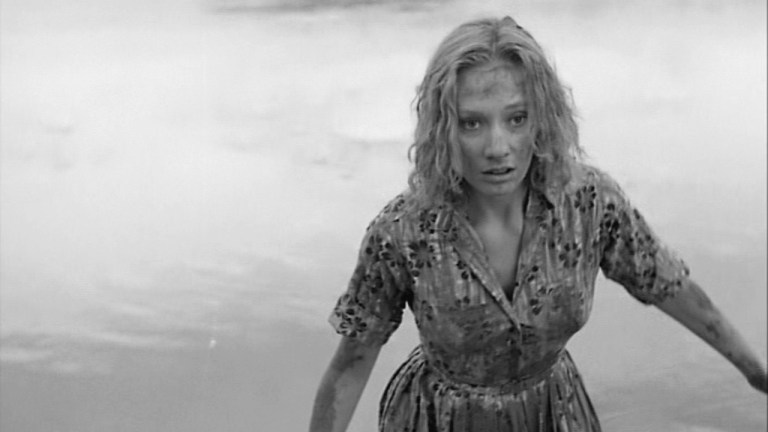
Herk Harvey’s existentially gutting picture influenced many of the greats, such as David Lynch and George A. Romero. The beautiful black-and-white, atmospheric film opens up with a drag race, which ends up with a carful of young women plunging off a bridge and into a lake, where there’s no sign of the vehicle or the girls. Mary Henry (Candace Hilligloss) miraculously surfaces from the water hours later, with no recollection of how she survived. She relocates to Salt Lake City to work as a church organist, where she has trouble assimilating with the locals. She’s haunted by visions of a ghoulish-faced, mysterious Man (Harvey), who seems to be following her every move, compelling her to the pavilion of an abandoned carnival. Janisse refers to the movie as a “pioneer of the purgatorial horror subgenre.” This timeless twist-ending masterpiece has often been imitated, but never matched.
The Blood Spattered Bride (1972)
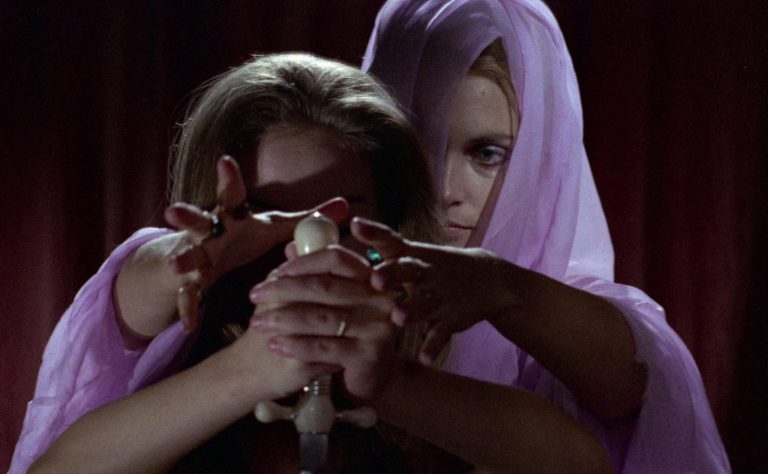
“The Blood Spattered Bride stands out as one of the most remarkable examples of the ‘70s Spanish horror boom,” writes Janisse in her book. Loosely inspired by Sheridan Le Fanu’s 1872 novel Carmilla, the lesbian vampire film follows a newlywed couple who travels to an isolated family estate for their honeymoon. Susan (Maribel Martín), the young bride who isn’t too eager about consummating her marriage, can’t shake the notion that she’s being watched by a woman she previously saw outside a hotel. She also gets the feeling that her husband (Simóm Andreu), who remains unnamed throughout the film, wants to trap and humiliate her. Susan is haunted by dreams involving the mysterious woman, who turns out to be Mircala Karstein (Alexandra Bastedo), the wife of one her husband’s ancestors who murdered him on their wedding night. As Susan’s husband becomes a pest who’s increasingly sexually obsessed with her, she slowly becomes enlightened about her sexuality. The vampire, although murderous, isn’t the monster in this movie, but rather the “knight in shining armor.”
Symptoms (1974)

Janisse describes Symptoms as following “in the steps of Altman’s Images and Polanski’s Repulsion in its intense, brooding study of a young woman teetering on the edge of sanity.” The movie is a British psychological gothic horror that leaves a lasting impression on its viewer with its lead’s phenomenal performance, atmosphere, tension, dreamlike nature, and beautiful visuals. It doesn’t just hypnotize, but it discombobulates all the senses. Helen Ramsey (Angela Pleasance), a reclusive young woman who exudes social awkwardness, invites her friend Anne (Laura Heilbron) out to her isolated country manor which, as Janisse discusses, “acts as a very physical counterpart to her madness.”
Alucarda (1977)

Alucarda is one of the best Latin American horror films. The English-language Mexican arthouse horror is directed by Juan López Moctezuma, the director of Mary, Mary, Blood Mary (1975) and The Mansion of Madness (1973). The movie is a patchwork of possession, vampirism, devil worship, and blood ritual. Alucarda explores themes of rebellion, science and religion, modernity vs. tradition, sexual repression under religion, oppression under patriarchy, and female empowerment. At its core, it’s a scathing critique of the corruption and malice of the Catholic church. The story is set in 1580 at an isolated convent and follows 15-year-old orphan Alucarda (Tina Romer). When new orphan Justine (Susana Kamini) arrives, the two quickly become captivated by one another. After pledging an immortal bond, the pair unleash a force of evil.
Possession (1981)
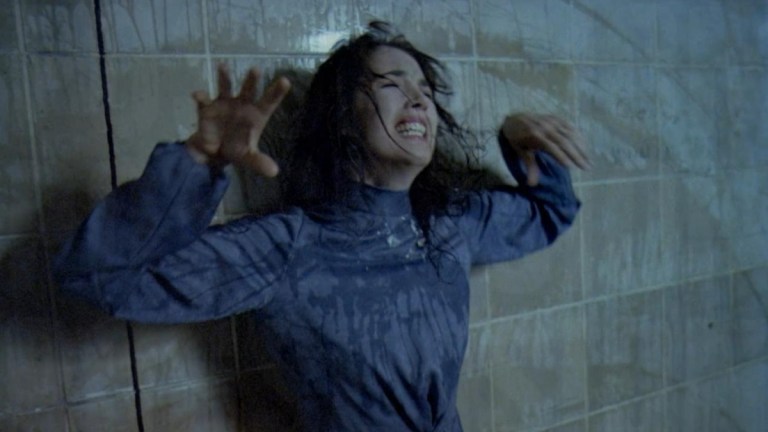
Janisse shares in her book that her inspiration “all started with Possession” and calls Andrzej Żuławski’s film “perfection,” praising its “deep blue hues, its labyrinthine locations” and “the hypnotic cinematography of Bruno Nuytten.” The anti-romcom horror was written during a time where Żuławski, its writer and director, was undergoing an excruciating separation from actress Malgorzata Braunek. The film, which serves as an allegory for divorce, also explores codependency, the idealized version of people, and how love can turn us into monsters. Its story revolves around the disintegration of a marriage between couple Anna (Isabelle Adjani) and Mark (Sam Neill). After asking for a divorce, Anna displays increasingly erratic behavior. Mark’s obsession with finding out the cause of the dissolution of their marriage drives him to criminal acts, but his wife’s secret is far more horrifying than his fear of infidelity.
Audition (1999)
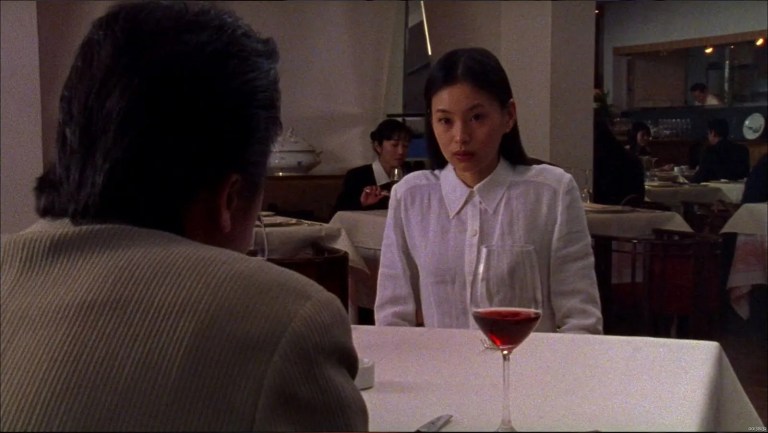
Audition is a horror movie that reportedly even Rob Zombie and Eli Roth found difficult to watch, and has been cited as a source of inspiration for the Soska sisters. The Japanese movie was directed by master of horror Takashi Miike. It revolves around widower Shigeharu Aoyama (Ryo Ishibashi), who has just decided that he is ready to start dating again. Eager to find the “perfect wife” and a mother figure for his son, he uses auditions for a fake production to interview a series of women for the role. When he meets a soft-spoken ballerina, Asami (Eihi Shiina), he quickly becomes enamored, but there is more to Asami than meets the eye. Audition is an exploration of obsession, revenge, the objectification of women, and female subservience. Janisse observes that Asami’s “violent actions are fueled in part by past wrongs that have nothing to do with Aoyama, but with its slow-burn approach, Miike’s Audition is able to make commentary on the systematic abuse of women that goes beyond the film’s notoriously graphic denouement.”
May (2002)
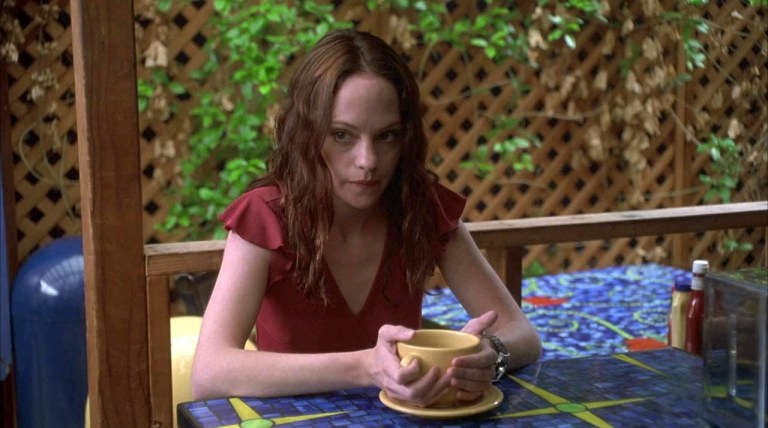
Surely, Janisse would agree that this list wouldn’t be complete without the “weird girl horror” May, whose protagonist she calls “equal parts Carrie White and Travis Bickle, a coalescence of gender typical of the ‘90s indie movies.” Angela Bettis stars as the titular lead, a fleshed-out character who remains strangely relatable to anyone who has ever struggled with loneliness and isolation. The socially awkward and shy veterinary assistant grew up without making friends and learning how to connect with her others. Her only friend is a doll she got as a kid, Suzie, who she regularly converses with and keeps locked behind a glass case. After heartbreak leaves her feeling dejected, May decides to “build” her own best friend by combining the parts of those who have wronged her.
Braid (2018)
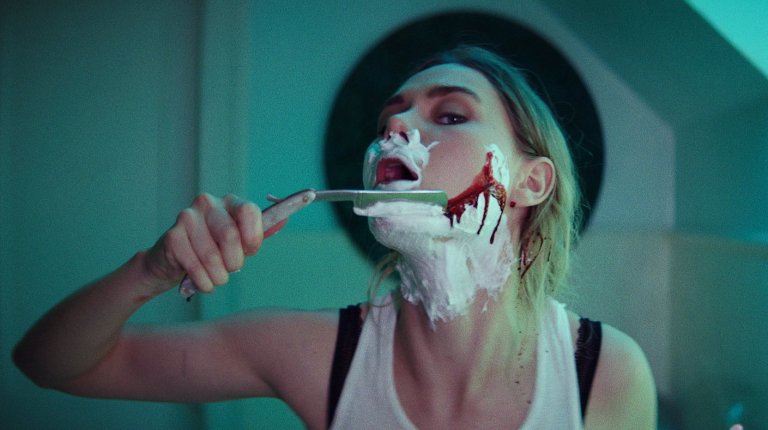
Braid, written and directed by the endlessly talented Mitzi Peirone, deserves far more recognition than it gets. This work of art is proof that Peirone is a criminally underrated director who deserves more praise. It follows a pair of young struggling artists whose criminal lifestyle to make ends meet has landed them in hot water. After losing $80,000 worth of drugs in a bust, they seek refuge in the isolated estate inhabited by their best friend from childhood, an agoraphobic and psychotic heiress who has been left alone to her own devices. They plan on finding her safe and robbing her, but in the 48 hours they have to get their dealer’s money back, she forces them to partake in the fantasy game of make believe they loved when they were kids. Peirone brings to life a visually lavish, psychedelic dreamscape that manages to maintain a gothic undertone. Braid is a unique film, and unlike anything else in the genre. With every re-watch, the viewer picks up on something new. Janisse reflects on the film’s setting as “recalling metaphysical mysteries like Picnic at Hanging Rock.”
Censor (2021)
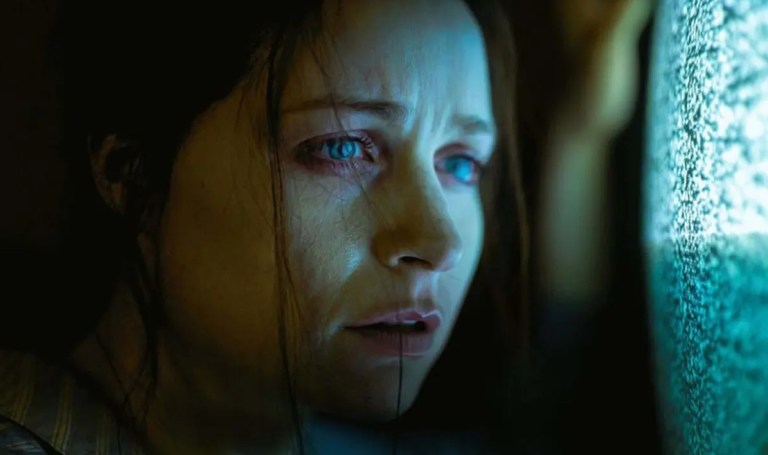
This meta arthouse horror is a debut that suprasses all expectations. It won the Best Feature Film at the UK Film Festival and the Directors to Watch award at Palm Springs International Film Festival. The movie is set in the 1980s, during Britain’s censorship of “video nasties.” It follows film censor Enid Barnes (Niamh Alger), who encounters a flick reminiscent of hazy memories surrounding her sister’s disappearance in childhood. In order to find closure and move forward with their lives, her parents have just declared her legally dead. As Enid begins to investigate further, she becomes convinced that her sister is still alive. The ultraviolence of the videos she reviews soon begins to leak into her world, and the lines between reality and fiction become blurred. This modern Giallo, which is shot primarily on 35mm film, with some Super8 and VHS footage, is clearly influenced by Dario Argento’s style, particularly in Suspiria (1977). It also takes after a grindhouse cinema aesthetic. Censor depicts how a person’s mind can betray them to protect them from a harsh reality, and as Janisse points out, it features a character who “also articulates that individuals project their baggage onto the art they encounter.”
More horror films featured in ‘House of Psychotic Women’ that are worth checking out…
Dracula’s Daughter (1936) is one of the best Universal Classic Monsters movies. The lesbian-coded film revolves around Countess Marya Zaleska (Gloria Holden), who hopes to rid herself of her vampirism after hearing of Dracula’s death. After ritualistically burning his body, it doesn’t work. She seeks out a psychiatrist, which ends up landing her in hot water with Dr. Von Helsing.
Morgiana (1972) a delirious gothic horror from Czechoslovakia that follows a young woman whose jealousy and greed drives her to dose her sister’s tea with a slow-acting fatal substance.
Blue Eyes of the Broken Doll (1973) a Spanish movie about an ex-convict who is hired as a handyman on the rustic estate of three very strange sisters. The film was released as The House of Psychotic Women in the U.S., and is the inspiration behind the book’s title.
The Loved Ones (2009) this Australian horror film follows a teenage girl who kidnaps and tortures a classmate in her basement after he politely rejects her invitation to prom.
American Mary (2012) an underrated feminist body horror written and directed by Jen and Sylvia Soska. It stars scream queen Katharine Isabelle as Mary, a promising young surgical student who enters the underground world of body modification after being assaulted by a professor and facing financial struggles.
Starry Eyes (2014) this under-the-radar horror gem stars Alex Essoe as Sarah, a mousy and hopeful starlet who descends into the dark world of Hollywood’s elite.
Swallow (2019) Haley Bennett stars as a young housewife living a suffocated and oppressed life inside her seemingly idyllic marriage. She begins swallowing increasingly dangerous objects in order to gain some sense of control.
Saint Maud (2019) a devout young hospice nurse with an obscure past, who becomes fixated on saving the soul of one of her patients, suffers with intensifying religious fervor.
Sissy (2022) a renowned social media influencer and “mental health advocate” faces her bullies at a bachelorette party over a weekend at a remote house.
Further reading:
